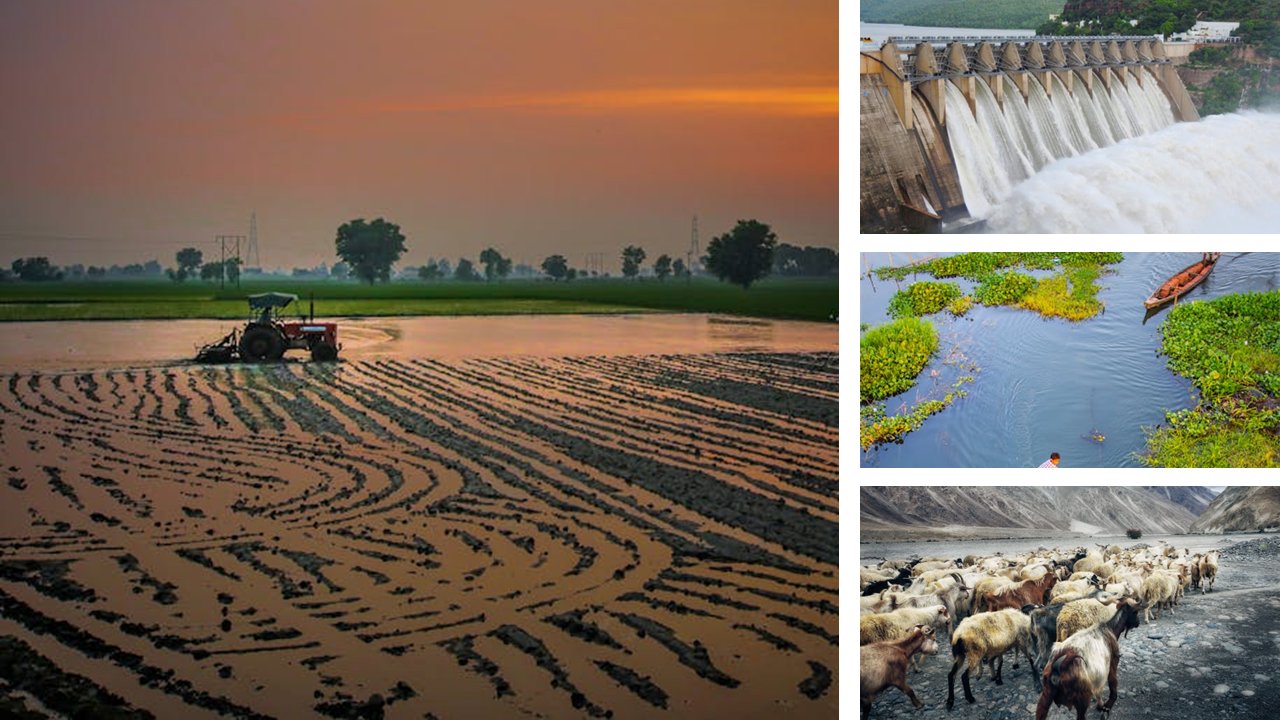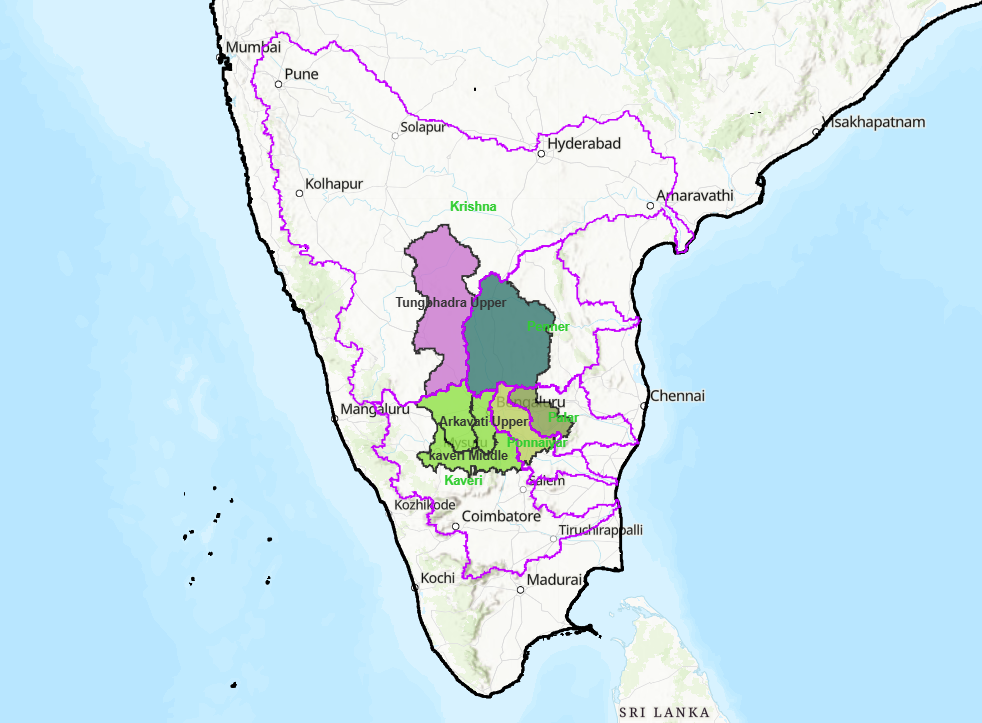 The Krishna and Cauvery River Basins are two of the most important river systems in southern India, supporting millions of people through agriculture, industry, and water supply. The Krishna River originates in Maharashtra and flows a total of 1,400km through important regions including Maharashtra, Karnataka, Telangana, and Andhra Pradesh, while the Cauvery originates in Karnataka and flows 800 km through Tamil Nadu, Kerala, and Puducherry. The Krishna-Cauvery Water Action Collaborative (KCWAC) is a private sector-led initiative based in India to accelerate collective action between private, public, and non-profit sectors to achieve a water-resilient future for the basins.
The Krishna and Cauvery River Basins are two of the most important river systems in southern India, supporting millions of people through agriculture, industry, and water supply. The Krishna River originates in Maharashtra and flows a total of 1,400km through important regions including Maharashtra, Karnataka, Telangana, and Andhra Pradesh, while the Cauvery originates in Karnataka and flows 800 km through Tamil Nadu, Kerala, and Puducherry. The Krishna-Cauvery Water Action Collaborative (KCWAC) is a private sector-led initiative based in India to accelerate collective action between private, public, and non-profit sectors to achieve a water-resilient future for the basins.
Water and a water resilient future are critically important for this region of India. The Krishna River basin alone is crucial for several reasons, impacting various aspects of life and the environment in India:
Agriculture: The basin supports extensive agricultural activities, providing irrigation to millions of hectares of farmland. This makes it a vital source of food production for the region.
Water Supply: It is a primary source of drinking water for numerous towns and cities along its course, ensuring the sustenance of millions of people.
Industry: The river basin supports various industries, including textiles, sugar, and cement, contributing significantly to the local and national economy.
Hydropower: Several dams and hydroelectric projects on the Krishna River generate substantial amounts of electricity, aiding in the energy needs of the region.
Biodiversity: The basin is home to diverse ecosystems, supporting a wide range of flora and fauna. This biodiversity is essential for maintaining ecological balance.
Cultural and Historical Significance: The Krishna River holds immense cultural and historical importance. It is revered in Hindu mythology and has been the cradle of several ancient civilizations and empires.
Flood Control: The river's network of dams and reservoirs helps in managing floods, protecting lives and property during the monsoon season.
The Cauvery River basin is highly significant for several reasons, impacting the environment, economy, and culture of the regions it traverses:
Agriculture: The basin is known as the "Rice Bowl of Tamil Nadu" due to its fertile lands, which support extensive rice cultivation and other crops. It provides irrigation to millions of hectares of farmland.
Water Supply: The Cauvery River is a crucial source of drinking water for many towns and cities in Karnataka and Tamil Nadu, ensuring the sustenance of millions of people.
Hydropower: Several dams and hydroelectric projects, such as the Krishna Raja Sagara and Mettur dams, generate significant amounts of electricity, contributing to the region's energy needs.
Biodiversity: The basin supports diverse ecosystems and a wide range of wildlife, including elephants, tigers, and various bird species. It is a unique ecological hotspot.
Cultural and Historical Significance: The Cauvery River holds immense cultural and historical importance. It is revered in Hindu mythology and has been the cradle of several ancient civilizations and empires.
Economic Activities: The river supports various economic activities, including fishing and tourism. The scenic beauty of the river and its surroundings attracts numerous tourists, boosting the local economy.
Flood Control: The network of dams and reservoirs along the Cauvery helps in managing floods, protecting lives and property during the monsoon season.
Like many basins that are part of the Water Resilience Coaltions 100 Priority Basins, the Krishna and Cauvery River basins face many significant challenges that impact its sustainability and the well-being of the populations depending on it. Here are some of the key issues:
Water Scarcity: The basins experience frequent water shortages due to over-extraction which is frequently exacerbated by irregular rainfall patterns and prolonged droughts.
Pollution: Industrial effluents, agricultural runoff, and untreated sewage are major sources of pollution in the Krishna and Cauvery Rivers. This contamination affects water quality, harming aquatic life and posing health risks to humans.
Flooding: The rivers often suffer from severe flooding during the monsoon season, causing extensive damage to property and agricultural interests.
Inter-state Water Disputes: The rivers both flow through multiple states, leading to conflicts over water allocation. These disputes complicate water management and equitable distribution between stakeholder groups.
Climate Change: Changing climate patterns are impacting the river's flow, with increased instances of both droughts and floods. This variability makes it challenging to manage water resources effectively.
Sedimentation: High rates of sedimentation reduce the storage capacity of reservoirs and dams, affecting water availability for irrigation and other uses.
Addressing these challenges requires coordinated efforts in sustainable water management, pollution control, and infrastructure development to ensure the long-term health of the Krishna River basin.

The Krishna-Cauvery Water Action Collaborative covers a wide area of sourthern India and includes many sub-basins with varying degress of water-related challenges. Specific areas of interest are shown in the table below.

The Water Resilience Coalition is partnering with IIT-IIT in this region around project implementation. The Restore Promise of Water (RPOW) initiative, led by IIT-IIT, focuses on reviving traditional water management practices in India. The program reconnects farmers with rainwater harvesting and tank desilting, a method historically used to maintain water storage capacity. Over the past 200 years, the loss of this practice has contributed to floods, droughts, groundwater depletion, and agricultural stress.
RPOW operates in nine states and is community-led and funded, ensuring long-term sustainability. Farmers cover transportation costs, while excavation is supported by government schemes, corporate CSR programs, and donor contributions. The initiative aligns with broader watershed management efforts, helping to recharge groundwater, support river flow, and enhance urban water security.
The program uses data tracking and visual documentation to monitor progress, with engagement from NGOs, government agencies, corporate sponsors, and foundations. You can explore more details here. Let me know if you’d like to focus on a specific aspect!